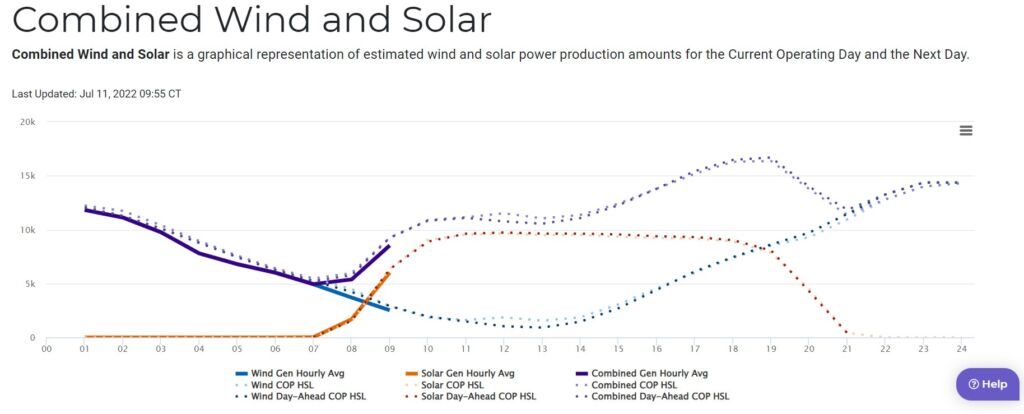Gridwatch 2022, Texas edition: Windless in Waco
My colleague Bill Glahn has started a series of news articles on the state of the electric grid that serves Minnesota, the Midcontinent Independent Systems Operator (MISO). Today, we’ll talk about the shaky situation unfolding on the Texas grid, the Electric Reliability Council of Texas (ERCOT).
Earlier this year, renewable advocates were celebrating wind and solar working together to meet electricity demand in Texas, but that may not be the case today because the 35,195 megawatts (MWs) of installed wind capacity on ERCOT is only expected to generate 911 MW at 1 pm or just 2.6 percent of its installed capacity.

ERCOT’s Seasonal Assessment of Resource Adequacy (SARA) report assumes they will have sufficient reserve margins. But this assumes that coastal wind will be producing 57 percent of installed capacity, it assumes panhandle wind will be operating at 30 percent of installed capacity, and other wind resources are expected to produce 20 percent of their potential output.

This means ERCOT expects all wind on its system to be operating at an average of 30 percent of its installed capacity during summer peak demand. Wind generation is expected to pick up to 5,859 MW by 5 pm, which is still 45 percent less than expected.
These assumptions for wind availability for wind during the summer peak are unbelievable, in the sense that I am having a hard time believing that ERCOT could actually make these irresponsible assumptions for wind availability.
The main takeaway is that there are 8,760 hours in a year. If advocates of intermittent wind and solar power are going to crow about the hours that renewables serve load, they need to own instances like today where they don’t show up to work.